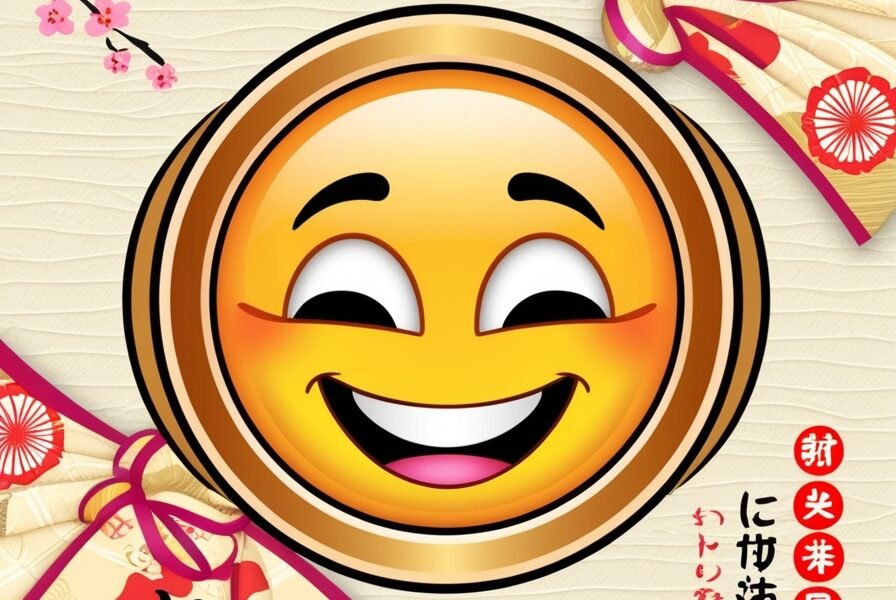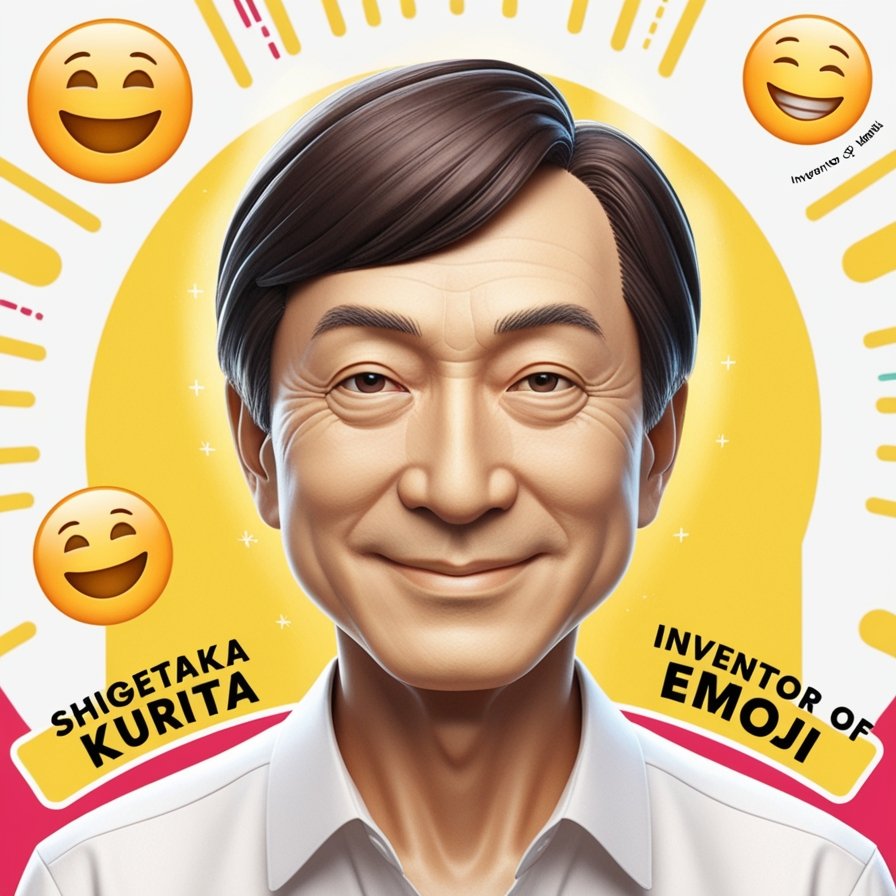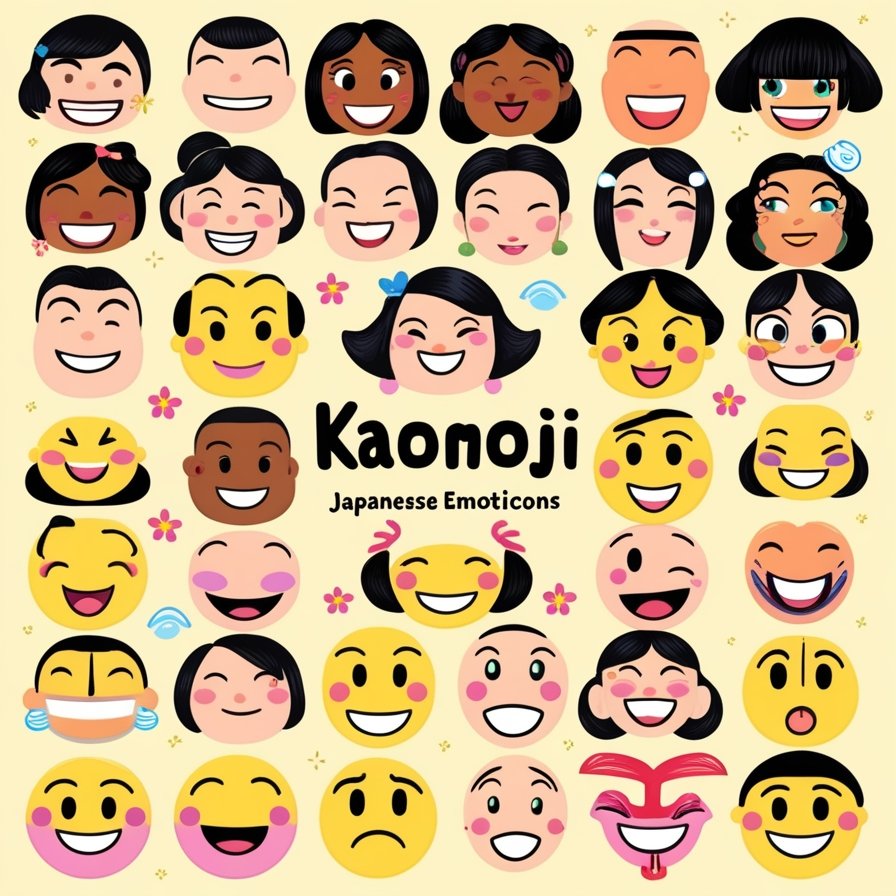Did you know the 😂 emoji you use daily has roots in Japanese manga tears? Or that 🙏 isn’t just about prayer—it’s a casual “thank you” in Tokyo? Emojis were born in Japan, and their meanings often carry cultural secrets lost in translation. Let’s dive into the fascinating world of emoji meaning in Japanese and decode the symbols that started a global revolution.
The Birth of Japanese Emoji: More Than Just Cute Icons
The story begins in 1999, when Shigetaka Kurita, a designer at Japan’s NTT DoCoMo, created the first 176 emojis. These pixelated icons weren’t just about fun—they solved a problem. Early mobile screens were tiny, and text-only messages felt impersonal. Kurita’s solution? Borrow from Japanese visual culture:
- Manga expressions: Tears, sweat drops, and sparkles to convey emotion.
- Daily life: Trains 🚅, rice balls 🍙, and ramen 🍜.
- Symbols: The 🔴 red circle (inspired by Japan’s flag) and 🈴 (the “pass” mark for exams).
These Japanese emoji weren’t just tools; they were a language shaped by Japan’s love for simplicity and indirect communication.
Lost in Translation: Emojis That Mean Something Very Different in Japan
Many Japanese emoji have unexpected meanings outside their homeland. Here’s your cheat sheet to avoid awkward mix-ups:
🙏 Folded Hands
- Global use: Prayer, “please,” or high-five.
- Japanese meaning: A polite “thank you” or apology. Think of it as bowing in emoji form.
👌 OK Hand Sign
- Global use: “Okay!” or approval.
- Japanese twist: When placed near the face (👌😊), it symbolizes money—like asking, “Can I borrow cash?”
💮 White Flower
- Global use: A generic bloom.
- Japanese meaning: A gold star! Teachers use it to mark correct answers.
👺 Red Ogre Face
- Global use: A generic angry devil.
- Japanese meaning: A tengu—a mythical trickster spirit with a long nose, often linked to folklore.
🎌 Crossed Flags
- Global use: Celebration or unity.
- Japanese context: Represents a romantic relationship or school festival.
Unique Japanese Emoji You Won’t Find Elsewhere
Some Japanese emoji are deeply tied to local culture:
- 🍡 Dango: Sweet rice dumplings eaten during cherry blossom season.
- 🏮 Red Paper Lantern: Symbolizes izakayas (Japanese pubs) or nightlife.
- 👘 Kimono: Worn during festivals like Coming-of-Age Day.
- 🗻 Mount Fuji: A national icon and UNESCO World Heritage site.
Even food emojis tell a story: 🍥 (narutomaki, a fish cake in ramen) and 🍘 (rice crackers) are staples in Japanese pantries.
Why Understanding Japanese Emoji Meanings Matters
Emojis are a cultural handshake. Using them “wrong” in Japan can lead to confusion:
- Sending ❌ to a friend? In Japan, it’s a “no” symbol (like ✖️), not a playful tease.
- The 💢 anger symbol (a popped vein) is used humorously, like “Ugh, why?!”
- The 😇 angel emoji? It’s linked to innocence, not sarcasm.
For travelers or global brands, grasping emoji meaning in Japanese bridges gaps—and avoids accidental rudeness.
How Japanese Emoji Shaped the World (And Your Keyboard)
Japan’s emoji craze spread globally after Apple added them to iOS in 2011. But some originals stayed uniquely Japanese:
- The 🚅 bullet train (Shinkansen) reflects Japan’s famed rail system.
- 🎎 Dolls represent Hinamatsuri, the Doll Festival.
- 🎏 Carp streamers symbolize Children’s Day.
Today, Unicode includes over 3,600 emojis, but Japan’s DNA is everywhere—from 🍣 to 🥷 (ninja).
FAQs: Decoding Japanese Emoji
Q: Why do some Japanese emojis have different meanings?
A: Emojis were designed around Japanese culture. Symbols like 🙏 (gratitude) or 👺 (tengu) reflect local customs, which don’t always translate.
Q: What’s the most misunderstood Japanese emoji?
A: The 👌 hand sign! In Japan, it’s about money, not approval.
Q: Are there emojis only Japanese people use?
A: Yes! 🈴 (the “pass” mark), 🏮 (izakaya lantern), and 🎌 (festival flags) are deeply local.
Q: How can I learn emoji meaning in Japanese?
A: Follow Japanese social media or manga—they’re treasure troves of context!
Q: Did Japan invent all emojis?
A: Yes! Shigetaka Kurita’s 1999 set paved the way, though modern emojis are a global effort.
Final Thoughts: Emojis as Cultural Keys
Next time you tap a 💮 or 🏮, remember: you’re not just sending an icon—you’re sharing a slice of Japanese life. Whether it’s a steaming bowl of ramen 🍜 or a mischievous tengu 👺, these tiny symbols keep traditions alive in our digital world.
So, go ahead—text your friend a 🍡 and watch them Google “dango.” You’ll both learn something new. 🇯🇵✨
Got a fave Japanese emoji or a confusing one? Drop it in the comments—let’s decode together!



